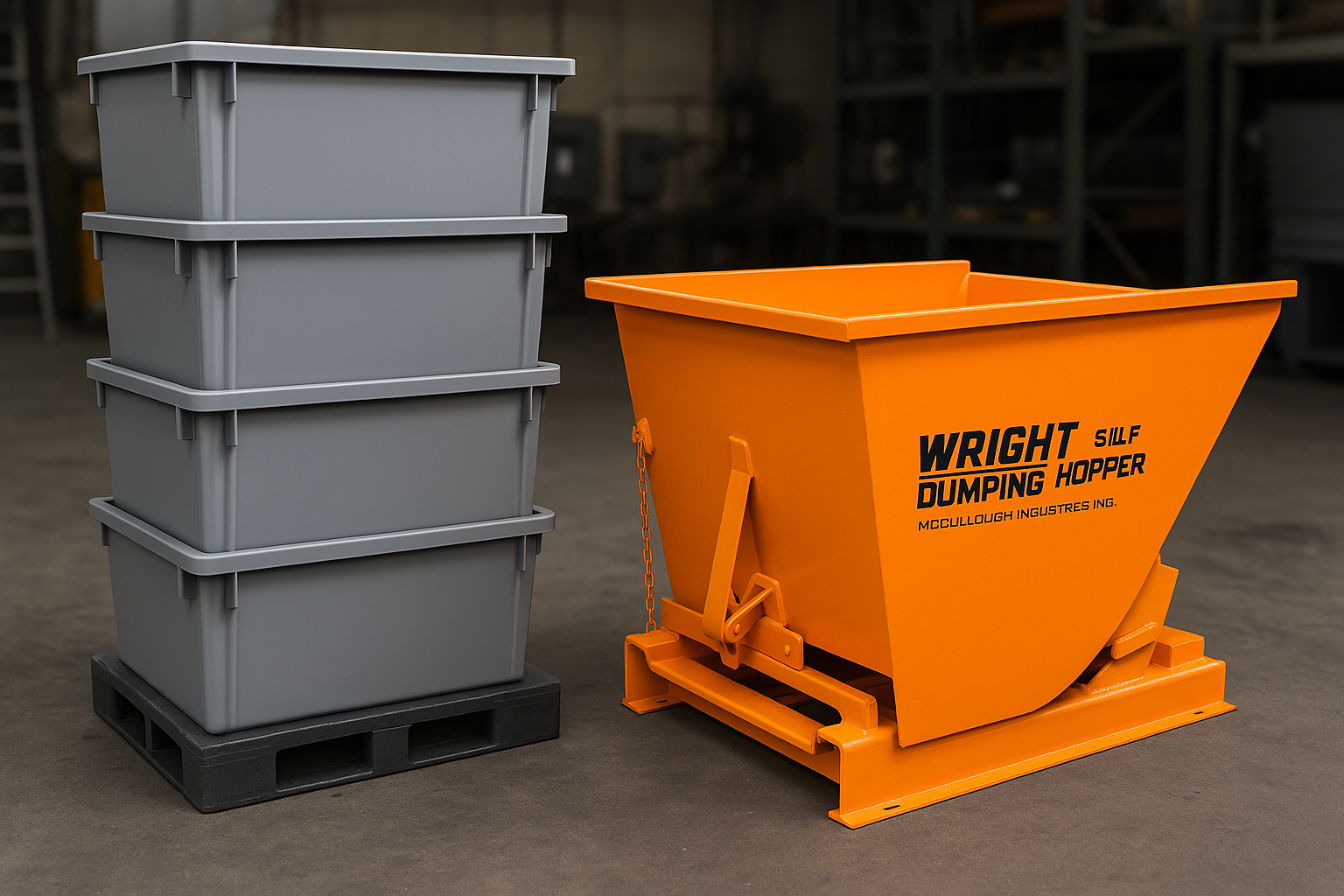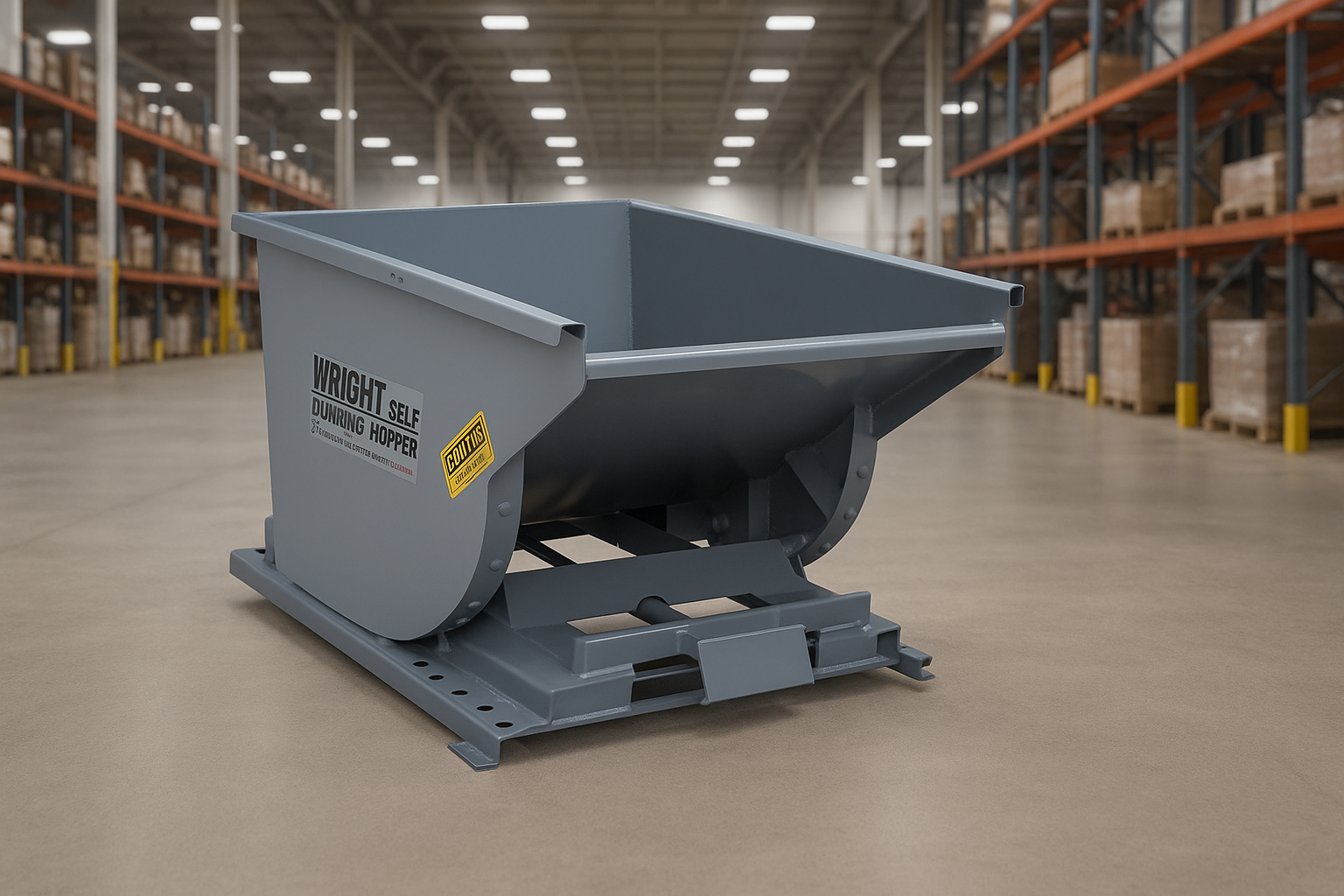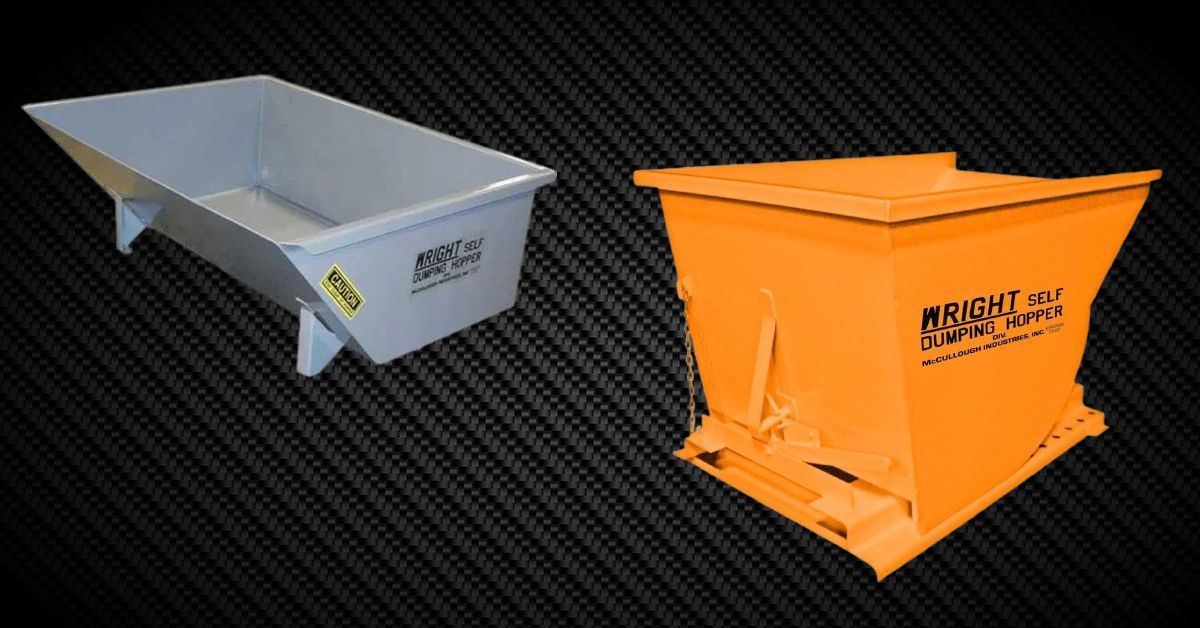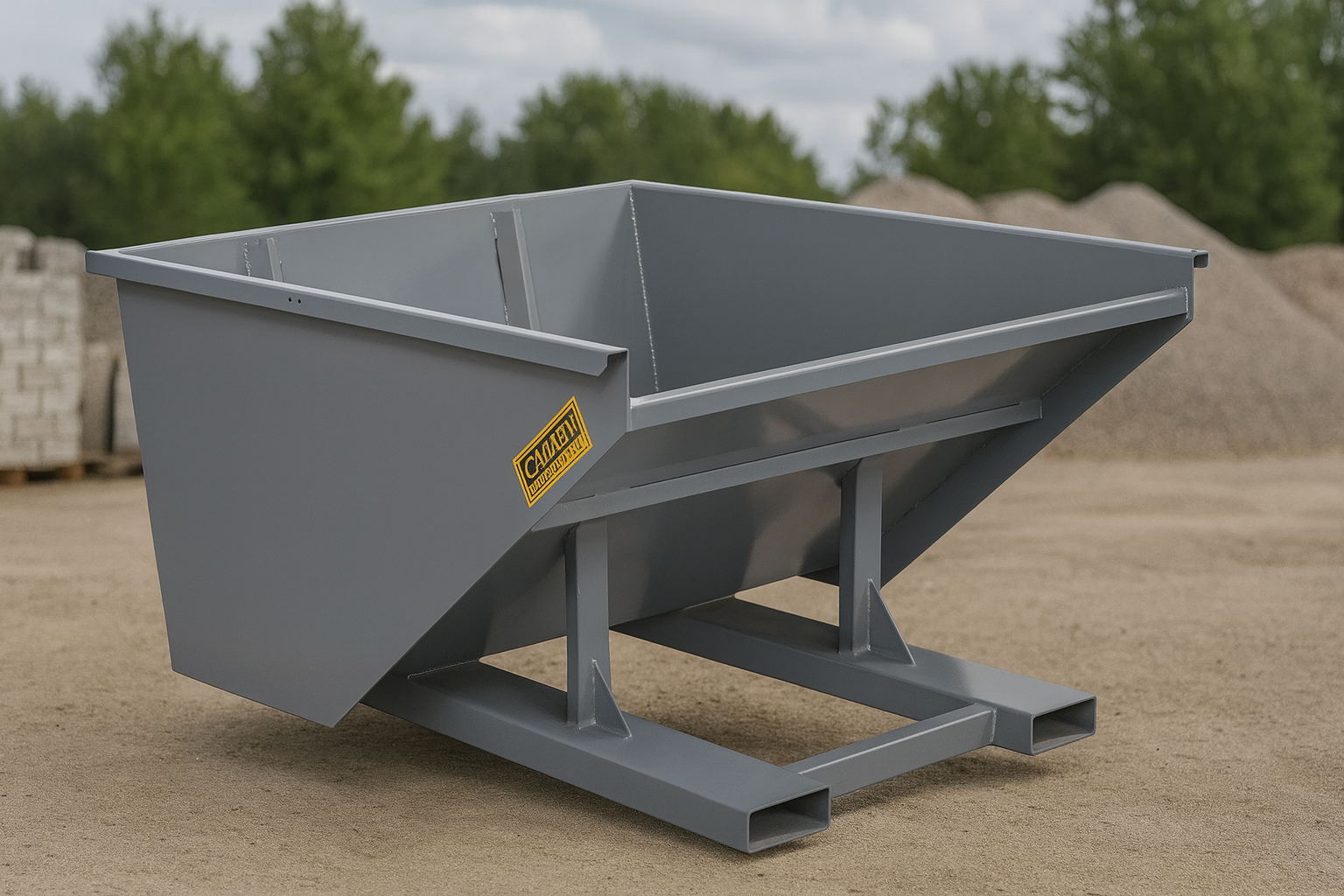
Why Dump Hopper Maintenance Matters
In high-output industrial environments, dump hoppers play a key role in keeping materials moving and production floors clean. But even the most ruggedly built Wright® Self-Dumping Hopper from McCullough Industries can lose efficiency or become a safety risk if not properly maintained. Regular upkeep doesn't just extend the life of your hopper it improves workflow, protects employees, and helps you avoid unnecessary repairs or replacements.
This maintenance guide is tailored to McCullough's heavy-duty hoppers, providing best practices for inspecting, cleaning, and servicing units used in machining, fabrication, recycling, and general industrial applications.
Routine Inspection Checklist
The first step to effective maintenance is consistent inspection. Use this checklist weekly or after heavy use:
| Inspection Point | What to Check | Recommended Action |
|---|---|---|
| Weld seams | Look for cracking, separation, or corrosion | Schedule repair if signs appear |
| Dump mechanism | Inspect hinge pins, springs, and latches | Lubricate or replace as needed |
| Fork pockets | Check for bending or widening | Ensure forks seat properly |
| Base structure | Look for dents or signs of uneven wear | Reinforce or rotate hoppers if needed |
| Casters or floor locks | Verify mobility and brake function | Replace worn casters or locks |
| Safety chains or lugs | Ensure secure attachment and minimal slack | Replace frayed chains or damaged lugs |
| Paint or finish | Identify rust or worn coatings | Touch up with industrial-grade paint |
Keeping a maintenance log can help you track recurring issues and plan upgrades or replacements proactively.
Cleaning Procedures for Daily Use
Hoppers often handle materials contaminated with oil, coolant, or abrasive debris. Clean your hopper at the end of each shift or day, especially in machining environments:
- Rinse interior with water or cleaning agent suitable for your material
- Use a long-handled brush to remove compacted waste
- Avoid pressure washing near hinges or bearings to preserve lubrication
- Inspect drain plugs and gasketed edges for leaks
- Remove metal shavings and debris that may obstruct dump mechanisms
For hoppers used with food-grade or caustic materials, more frequent sanitation or stainless models may be required.
Maintaining Dump Mechanisms
The dump mechanism including the latch, spring, and reset system is vital for safe operation. To keep it in good condition:
- Lubricate moving joints with grease monthly
- Confirm auto-latch returns to locked position after each dump
- Watch for hesitation or resistance during dumping (a sign of buildup or misalignment)
- Replace worn pins, springs, or bushings with factory-compatible parts
If your hopper is exposed to extreme temperatures or used for abrasive scrap, more frequent attention is advised.
Caster and Mobility System Upkeep
Worn or misaligned casters can lead to tip risks or operator strain. Here's how to maintain them:
- Grease bearings and wheel stems every 60 days
- Inspect caster plates for bent mounts or weld cracks
- Rotate casters or floor locks across units to even out wear
- For outdoor or rough terrain, inspect steel casters for rust or binding
Upgrading to polyurethane or galvanized steel casters can improve longevity and mobility.
Drip Tray and Lid Maintenance
Hoppers equipped with accessories like drip trays or gasketed lids require special attention:
- Clean drip trays weekly to prevent fluid overflow
- Tighten lid hinges and inspect gasket seals
- Replace worn or cracked gaskets to maintain containment integrity
These components are especially important in OSHA-regulated areas handling fluids or fumes.
What to Do If Damage Occurs
Not all damage requires replacement. Contact McCullough Industries if you experience:
- Warped dump frames
- Repetitive latch failure
- Inconsistent fork lift alignment
- Cracked weld seams
Our engineering team can provide replacement parts, welding services, or guidance on full replacements when needed. Most Wright® Self-Dumping Hoppers are built to be serviced, not scrapped.
Recommended Preventive Maintenance Schedule
| Task | Frequency |
|---|---|
| Visual inspection | Weekly |
| Grease dump components | Monthly |
| Caster maintenance | Every 2 months |
| Repaint exposed areas | As needed |
| Drain tray cleaning | Weekly |
| Gasket or lid check | Bi-weekly |
FAQs About Dump Hopper Maintenance
How long does a properly maintained hopper last?
With consistent maintenance, a Wright® Self-Dumping Hopper can last 10–15+ years in demanding industrial settings.
Can I replace parts myself?
Yes. Casters, chains, hinges, and even some structural components can be replaced with OEM parts from McCullough Industries.
What kind of lubricant should I use on the dump system?
Use a heavy duty industrial grease approved for steel components and temperature extremes.
What if my hopper is leaking coolant?
Check the seam welds and drain plug seals. If damage is minor, touch-up welding or gasket replacement may solve it.
Can maintenance reduce injury risk?
Absolutely. Most hopper-related injuries result from shifting units, uncontrolled dumps, or sharp material exposureall preventable with regular upkeep.
Build a Safer, Longer Lasting Hopper Program
Dump hoppers are often the unsung heroes of industrial operations. But like any machine, they need care. McCullough Industries builds hoppers that last and we help you keep them working at peak performance with support, parts, and guidance.
If you’re not sure whether to replace or repair, or you need a full maintenance guide specific to your model, contact our team. We’re here to make sure your Wright® hopper is always ready to work.






